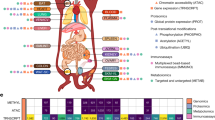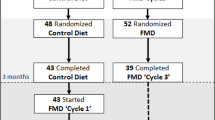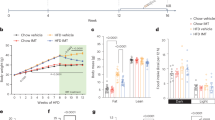Abstract
The discovery of genetic mechanisms for resistance to obesity and diabetes may illuminate new therapeutic strategies for the treatment of this global health challenge. We used the polygenic 'lean' mouse model, which has been selected for low adiposity over 60 generations, to identify mitochondrial thiosulfate sulfurtransferase (Tst; also known as rhodanese) as a candidate obesity-resistance gene with selectively increased expression in adipocytes. Elevated adipose Tst expression correlated with indices of metabolic health across diverse mouse strains. Transgenic overexpression of Tst in adipocytes protected mice from diet-induced obesity and insulin-resistant diabetes. Tst-deficient mice showed markedly exacerbated diabetes, whereas pharmacological activation of TST ameliorated diabetes in mice. Mechanistically, TST selectively augmented mitochondrial function combined with degradation of reactive oxygen species and sulfide. In humans, TST mRNA expression in adipose tissue correlated positively with insulin sensitivity in adipose tissue and negatively with fat mass. Thus, the genetic identification of Tst as a beneficial regulator of adipocyte mitochondrial function may have therapeutic significance for individuals with type 2 diabetes.
This is a preview of subscription content, access via your institution
Access options
Subscribe to this journal
Receive 12 print issues and online access
$209.00 per year
only $17.42 per issue
Buy this article
- Purchase on Springer Link
- Instant access to full article PDF
Prices may be subject to local taxes which are calculated during checkout






Similar content being viewed by others
Accession codes
Primary accessions
ArrayExpress
Gene Expression Omnibus
Referenced accessions
Expressed Sequence Tag Database
Change history
07 March 2018
In the version of this article initially published, the colors of the lines were switched in the graph that shows the glucose infusion rates for wild-type mice and Adipoq-Tst transgenic mice in Figure 3b. The top line should be purple, and the bottom line should be black. The error has been corrected in the HTML and PDF versions of the article.
References
Flegal, K.M., Carroll, M.D., Ogden, C.L. & Curtin, L.R. Prevalence and trends in obesity among US adults, 1999–2008. J. Am. Med. Assoc. 303, 235–241 (2010).
Yanovski, S.Z. & Yanovski, J.A. Obesity prevalence in the United States—up, down or sideways? N. Engl. J. Med. 364, 987–989 (2011).
Ljungvall, A. & Zimmerman, F.J. Bigger bodies: long-term trends and disparities in obesity and body-mass index among U.S. adults, 1960–2008. Soc. Sci. Med. 75, 109–119 (2012).
Morton, N.M. et al. A polygenic model of the metabolic syndrome with reduced circulating and intra-adipose glucocorticoid action. Diabetes 54, 3371–3378 (2005).
Horvat, S. et al. Mapping of obesity QTLs in a cross between mouse lines divergently selected on fat content. Mamm. Genome 11, 2–7 (2000).
Prevorsek, Z., Gorjanc, G., Paigen, B. & Horvat, S. Congenic and bioinformatics analyses resolved a major-effect Fob3b QTL on mouse chr 15 into two closely linked loci. Mamm. Genome 21, 172–185 (2010).
Bünger, L. et al. Long-term divergent selection on fatness in mice indicates a regulation system independent of leptin production and reception. FASEB J. 17, 85–87 (2003).
Morton, N.M. et al. A stratified transcriptomics analysis of polygenic fat and lean mouse adipose tissues identifies novel candidate obesity genes. PLoS One 6, e23944 (2011).
Westley, J. Rhodanese. Adv. Enzymol. 39, 327–368 (1973).
Hall, A.H., Saiers, J. & Baud, F. Which cyanide antidote? Crit. Rev. Toxicol. 39, 541–552 (2009).
Bonomi, F., Pagani, S., Cerletti, P. & Cannella, C. Rhodanese-mediated sulfur transfer to succinate dehydrogenase. Eur. J. Biochem. 72, 17–24 (1977).
Pagani, S. & Galante, Y.M. Interaction of rhodanese with mitochondrial NADH dehydrogenase. Biochim. Biophys. Acta 742, 278–284 (1983).
Nandi, D.L., Horowitz, P.M. & Westley, J. Rhodanese as a thioredoxin oxidase. Int. J. Biochem. Cell Biol. 32, 465–473 (2000).
Wang, R. Physiological implications of hydrogen sulfide: a whiff exploration that blossomed. Physiol. Rev. 92, 791–896 (2012).
Tiranti, V. et al. Loss of ETHE1, a mitochondrial dioxygenase, causes fatal sulfide toxicity in ethylmalonic encephalopathy. Nat. Med. 15, 200–205 (2009).
Smirnov, A. et al. Mitochondrial enzyme rhodanese is essential for 5 S ribosomal RNA import into human mitochondria. J. Biol. Chem. 285, 30792–30803 (2010).
Vernochet, C. et al. Adipose-specific deletion of Tfam increases mitochondrial oxidation and protects mice against obesity and insulin resistance. Cell Metab. 16, 765–776 (2012).
Tormos, K.V. et al. Mitochondrial complex III ROS regulate adipocyte differentiation. Cell Metab. 14, 537–544 (2011).
Kusminski, C.M. et al. MitoNEET-driven alterations in adipocyte mitochondrial activity reveal a crucial adaptive process that preserves insulin sensitivity in obesity. Nat. Med. 18, 1539–1549 (2012).
Geng, B. et al. Increase or decrease hydrogen sulfide exert opposite lipolysis but reduce global insulin resistance in high-fat-diet-induced obese mice. PLoS One 8, e73892 (2013).
Feng, X. et al. Hydrogen sulfide from adipose tissue is a novel insulin resistance regulator. Biochem. Biophys. Res. Commun. 380, 153–159 (2009).
Simoncic, M. et al. Divergent physical activity and novel alternative responses to high-fat feeding in polygenic fat and lean mice. Behav. Genet. 38, 292–300 (2008).
Svenson, K.L. et al. High-resolution genetic mapping using the Mouse Diversity outbred population. Genetics 190, 437–447 (2012).
Wang, Z.V., Deng, Y., Wang, Q.A., Sun, K. & Scherer, P.E. Identification and characterization of a promoter cassette conferring adipocyte-specific gene expression. Endocrinology 151, 2933–2939 (2010).
Xu, A. et al. The fat-derived hormone adiponectin alleviates alcoholic and non-alcoholic fatty liver diseases in mice. J. Clin. Invest. 112, 91–100 (2003).
Herman, M.A. et al. A novel ChREBP isoform in adipose tissue regulates systemic glucose metabolism. Nature 484, 333–338 (2012).
Sen, U. et al. Cardioprotective role of sodium thiosulfate on chronic heart failure by modulating endogenous H2S generation. Pharmacology 82, 201–213 (2008).
Sabelli, R. et al. Rhodanese–thioredoxin system and allyl sulfur compounds. FEBS J. 275, 3884–3899 (2008).
Koh, E.H. et al. Essential role of mitochondrial function in adiponectin synthesis in adipocytes. Diabetes 56, 2973–2981 (2007).
Emilsson, V. et al. Genetics of gene expression and its effect on disease. Nature 452, 423–428 (2008).
Moreno-Navarrete, J.M. et al. Decreased RB1 mRNA, protein and activity reflect obesity-induced altered adipogenic capacity in human adipose tissue. Diabetes 62, 1923–1931 (2013).
Wabitsch, M. et al. Characterization of a human preadipocyte cell strain with high capacity for adipose differentiation. Int. J. Obes. Relat. Metab. Disord. 25, 8–15 (2001).
Loos, R.J. The genetic epidemiology of melanocortin 4 receptor variants. Eur. J. Pharmacol. 660, 156–164 (2011).
Smemo, S. et al. Obesity-associated variants within FTO form long-range functional connections with IRX3. Nature 507, 371–375 (2014).
Kilpeläinen, T.O. et al. Genetic variation near IRS1 associates with reduced adiposity and an impaired metabolic profile. Nat. Genet. 43, 753–760 (2011).
Heid, I.M. et al. Meta-analysis identifies 13 new loci associated with waist–hip ratio and reveals sexual dimorphism in the genetic basis of fat distribution. Nat. Genet. 42, 949–960 (2010).
Rung, J. et al. Genetic variant near IRS1 is associated with type 2 diabetes, insulin resistance and hyperinsulinemia. Nat. Genet. 41, 1110–1115 (2009).
Vigouroux, C., Caron-Debarle, M., Le Dour, C., Magré, J. & Capeau, J. Molecular mechanisms of human lipodystrophies: from adipocyte lipid droplet to oxidative stress and lipotoxicity. Int. J. Biochem. Cell Biol. 43, 862–876 (2011).
Jacquemont, S. et al. Mirror extreme BMI phenotypes associated with gene dosage at the chromosome 16p11.2 locus. Nature 478, 97–102 (2011).
Zhang, Y. et al. Positional cloning of the mouse obese gene and its human homolog. Nature 372, 425–432 (1994).
Mathes, W.F., Kelly, S.A. & Pomp, D. Advances in comparative genetics: influence of genetics on obesity. Br. J. Nutr. 106 (suppl. 1), S1–S10 (2011).
Soloveva, V., Graves, R.A., Rasenick, M.M., Spiegelman, B.M. & Ross, S.R. Transgenic mice overexpressing the β1-adrenergic receptor in adipose tissue are resistant to obesity. Mol. Endocrinol. 11, 27–38 (1997).
Harms, M. & Seale, P. Brown and beige fat: development, function and therapeutic potential. Nat. Med. 19, 1252–1263 (2013).
Hawley, S.A. et al. The ancient drug salicylate directly activates AMP-activated protein kinase. Science 336, 918–922 (2012).
Hawley, S.A. et al. Use of cells expressing gamma subunit variants to identify diverse mechanisms of AMPK activation. Cell Metab. 11, 554–565 (2010).
Munger, S.C. et al. RNA-seq alignment to individualized genomes improves transcript abundance estimates in multiparent populations. Genetics 198, 59–73 (2014).
Steele, R., Wall, J.S., De Bodo, R.C. & Altszuler, N. Measurement of size and turnover rate of body glucose pool by the isotope-dilution method. Am. J. Physiol. 187, 15–24 (1956).
Hildebrandt, T.M. & Grieshaber, M.K. Three enzymatic activities catalyze the oxidation of sulfide to thiosulfate in mammalian and invertebrate mitochondria. FEBS J. 275, 3352–3361 (2008).
Acknowledgements
N.M.M. was supported by a Career Development Fellowship, an Institutional Strategic Support Fund award and a New Investigator Award from the Wellcome Trust (100981/Z/13/Z), a Research Councils UK Fellowship and a British Heart Foundation Centre of Research Excellence exchange award. We thank the Slovenian Research Agency for support (core funding P4-0220; project N5-0003 Syntol and J4-6804; all to S.H.) and for a Young Scientist Fellowship (J.B.). We acknowledge support of the British Heart Foundation Research Excellence Award in support of the contribution by the Bioinformatics Core (D.R.D.). T.M.S. received funding from the Federal Ministry of Economy, Family and Youth and from the Austrian National Foundation for Research, Technology and Development. G.A.C. was supported by the US National Institutes of Health grant R01GM 070683. J.M.F.-R. acknowledges funding from FIS PI11/00214. A.V.-P. was funded by the UK Medical Research Council (MRC) MDU, an MRC Programme grant, MRC DMC Core and MITIN (HEALTH-F4-2008-223450). We thank M. Wabitsch (University of Ulm) for the gift of the SGBS human preadipocyte cell line.
Author information
Authors and Affiliations
Contributions
N.M.M. and S.H. conceived the experiments; N.M.M., J.B., R.N.C., Z.M., G.G., S.C.M., S.R.-C., C.M., M.E.B.-L., R.E.A., L.R., A.F.H. and S.H. performed experiments on in vivo models or samples; N.M.M., R.N.C., J.M.M.-N., M.T.G.G., C.M. and A.G. performed experiments on in vitro models; J.M.M.-N., V.G., J.M.F.-R. and V.E. provided and analyzed gene expression data from human adipose tissue; M.Z. and T.M.S. provided human adipose tissues; G.N. generated the TST inhibitor; A.S. and P.S. generated the Adipoq-Tst mice; Z.V.W. generated the adiponectin promoter DNA vector; D.R.D. performed bioinformatics analyses; S.C.M., K.L.S. and G.A.C. generated the Diversity Outbred mouse resources and data; S.R.-C., C.J.K., J.R.S., B.R.W., S.P.W., A.V.-P., J.M.F.-R., V.E. and S.H. discussed results and commented on the manuscript; and N.M.M. and S.H. wrote the paper.
Corresponding authors
Ethics declarations
Competing interests
N.M.M. and S.P.W. hold a target patent (WO2012/104589) for TST in weight-related disorders.
Supplementary information
Supplementary Text and Figures
Supplementary Figures 1–8 and Supplementary Tables 1–4 (PDF 1475 kb)
Rights and permissions
About this article
Cite this article
Morton, N., Beltram, J., Carter, R. et al. Genetic identification of thiosulfate sulfurtransferase as an adipocyte-expressed antidiabetic target in mice selected for leanness. Nat Med 22, 771–779 (2016). https://doi.org/10.1038/nm.4115
Received:
Accepted:
Published:
Issue Date:
DOI: https://doi.org/10.1038/nm.4115
This article is cited by
-
Whole genome sequencing of mouse lines divergently selected for fatness (FLI) and leanness (FHI) revealed several genetic variants as candidates for novel obesity genes
Genes & Genomics (2024)
-
Evaluation of prophylactic efficacy of sodium thiosulfate in combating I/R injury in rat brain: exploring its efficiency further in vascular calcified brain slice model
Naunyn-Schmiedeberg's Archives of Pharmacology (2023)
-
Thiosulfate sulfurtransferase prevents hyperglycemic damage to the zebrafish pronephros in an experimental model for diabetes
Scientific Reports (2022)
-
Impact of Age, Sex, and Genetic Diversity in Murine Models of the Hematopoietic Acute Radiation Syndrome (H-ARS) and the Delayed Effects of Acute Radiation Exposure (DEARE)
Current Stem Cell Reports (2022)
-
Inhibition of the 3-mercaptopyruvate sulfurtransferase—hydrogen sulfide system promotes cellular lipid accumulation
GeroScience (2022)



